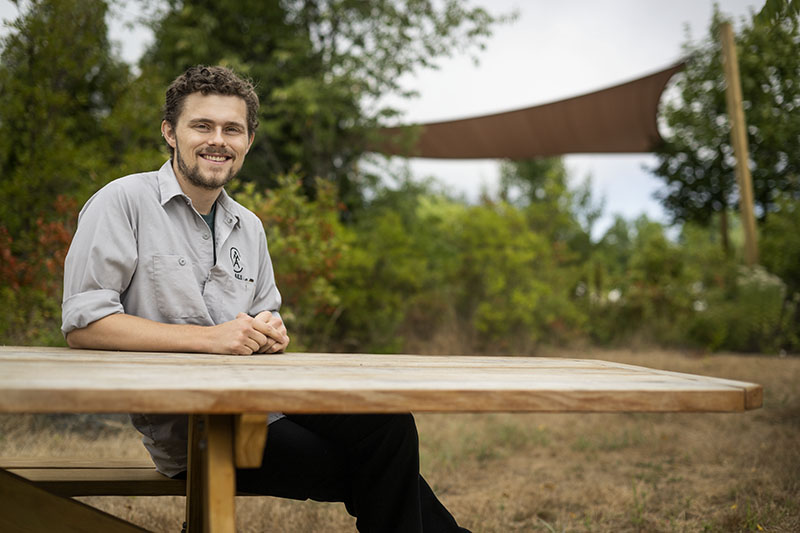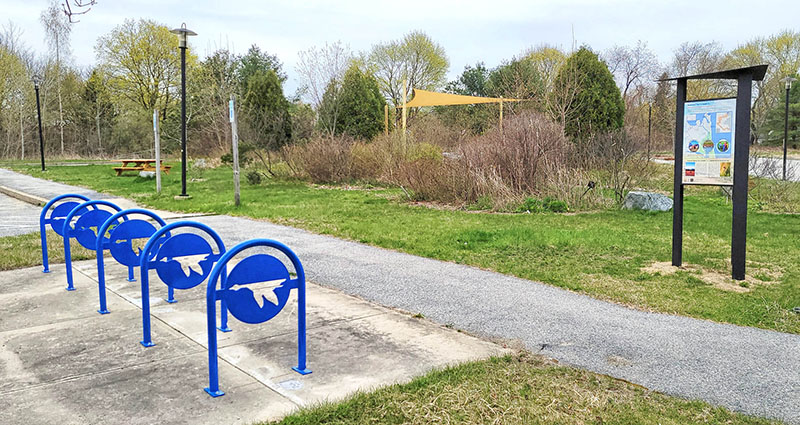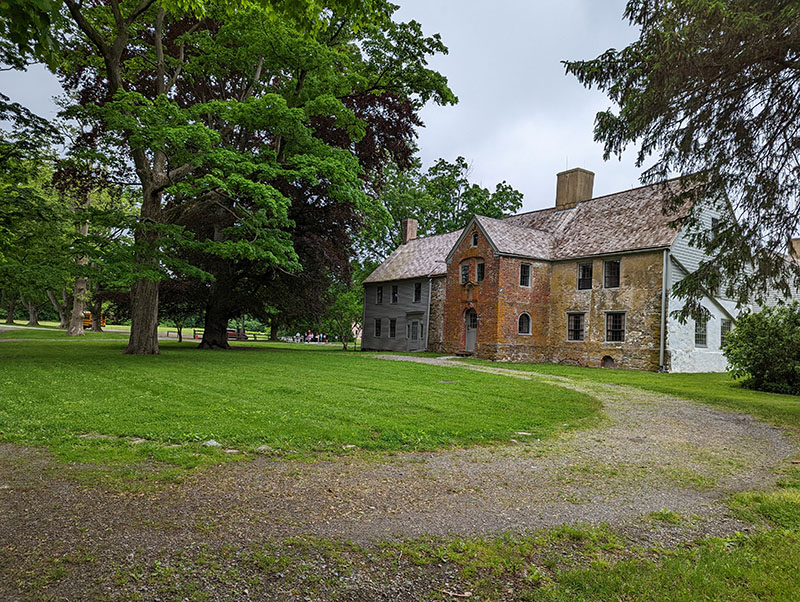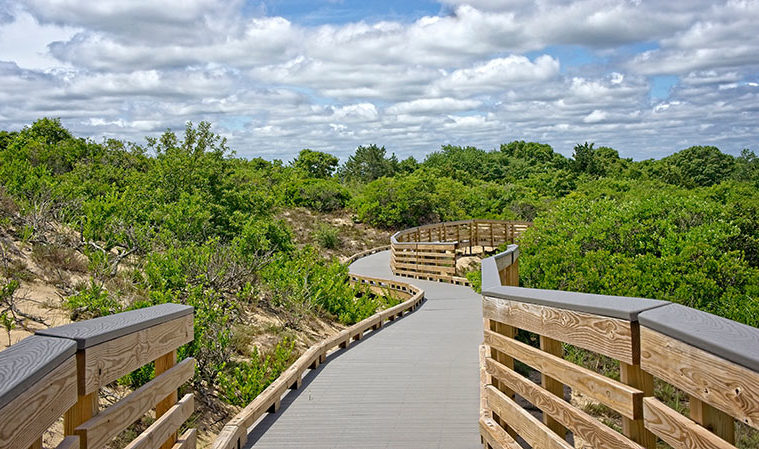The ability to experience and enjoy nature is important, especially while we still weather the pandemic. But for people with disabilities, it hasn’t always been easy to do. Trails, beaches, and other outdoor spaces are often inaccessible for people who have mobility and other limitations.
That’s why the Appalachian Mountain Club (AMC) is among the organizations working to improve access to trails and other open spaces for people with disabilities throughout the North Shore and beyond.
The AMC recently received a grant from the Essex National Heritage Commission’s 2022 Essex Heritage Partnership Grant Program to develop an accessible trail hub for the northernmost point of the Bay Circuit Trail at the Parker River National Wildlife Refuge visitor center.

The Essex Heritage Partnership grant will help to fund phase two of the accessible trails hub. After a phase one that included an interpretive sign, bike racks, accessible picnic tables for wheelchair users, and a shaded rest area, phase two will expand upon it and implement more accessibility features into the area around the visitor center in partnership with the neighboring Spencer-Peirce-Little Farm, says Mickey Tommins, Bay Circuit Trail coordinator for the AMC.
Some of the specific projects they have in mind are signage that indicates trail specifications such as grade (how steep the trail is), cross slope (how the trail is perpendicular to the direction you’re walking), mileage, and trail surface.
“In our outreach to disability advocates, we realized that information was so critical. People want to know what they’re getting into,” Tommins says. “There’s such a wide range of mobility limitations, so knowing how steep a trail is, knowing what the surface is like, can really improve the access. Having all that stuff available online and also at our trailhead, we think, is going to be key to expanding that access.”

Other planned projects include more interpretive signage, multilingual signage, Braille signage, and a rest area at a scenic, native-wildflower area. They aim to have these elements in place by the fall.
“This is all to branch out with other local conservation organizations in the area and kind of create that trails hub,” he says.
According to Kristen Sykes, southern New England director of conservation projects and partnerships for the AMC, the Parker River National Wildlife Refuge visitor center was a natural choice for the accessible trail hub for many reasons, including abundant, existing parking; bathrooms; and an excellent, accessible visitor center.
“They really do have accessibility as a priority,” she says. In fact, they developed an entire accessibility guide for the Parker River National Wildlife Refuge and reconstructed the Hellcat Trail in 2020 to be completely wheelchair accessible.
The Hellcat Trail consists of a 1.3-mile loop boardwalk that crosses the refuge road and back, allowing visitors to see the North Pool, a forested wetland, shrublands, and dunes. The accessible trial guide outlines several thoughtful features of the Hellcat Trail, including its surface materials (composite lumber boardwalk), its width (at least five feet), the height of the railings at its viewing platforms (approximately 3.5 feet high), its grade (mostly flat or gently sloping), and the locations of benches along the way. The guide also notes the number and location of the Hellcat Trail’s handicapped parking spaces.
The Hellcat Trail itself is beautiful and especially popular among birders. In addition to the main loop trail, it also has three offshoots that lead to viewing areas, including one that’s particularly striking, overlooking the dunes and the Atlantic Ocean.

Although accessible trails can be hard to find, more and more organizations are making them a priority and sharing information with the public about those that exist. On the North Shore, for instance, Tommins points to Haggett’s Pond & Rail Trail in Andover, an unpaved, flat trail that’s friendly for wheelchair users and people with vision impairments. There are also paved walking areas in Bradley Palmer State Park in Topsfield and a short, accessible trail that leads to a viewing platform at Pine Hole Bog at the Ward Reservation in Andover.
For people with disabilities, accessible trails are important, but just as important is telling people about accessibility features ahead of time through online information and informational signage. If accessibility features are in place, but no one knows about them, they won’t be used as much. Without having such upfront information, someone with a disability may choose to forgo visiting at all, since they wouldn’t know whether they could access the site. In addition, no one wants to be halfway up a trail only to realize that it becomes inaccessible to them the rest of the way.
The importance of communicating accessibility features was one of the biggest takeaways that the AMC learned in talking with disability advocates.
“Information is just so critical,” Tommins says. “Information is easy to provide. That’s why we’re so focused on making that a point for phase two of the accessible trails hub and taking the Parker River National Wildlife Refuge’s lead on those accessibility facts as well.”
Contact fws.gov/refuge/parker_river

